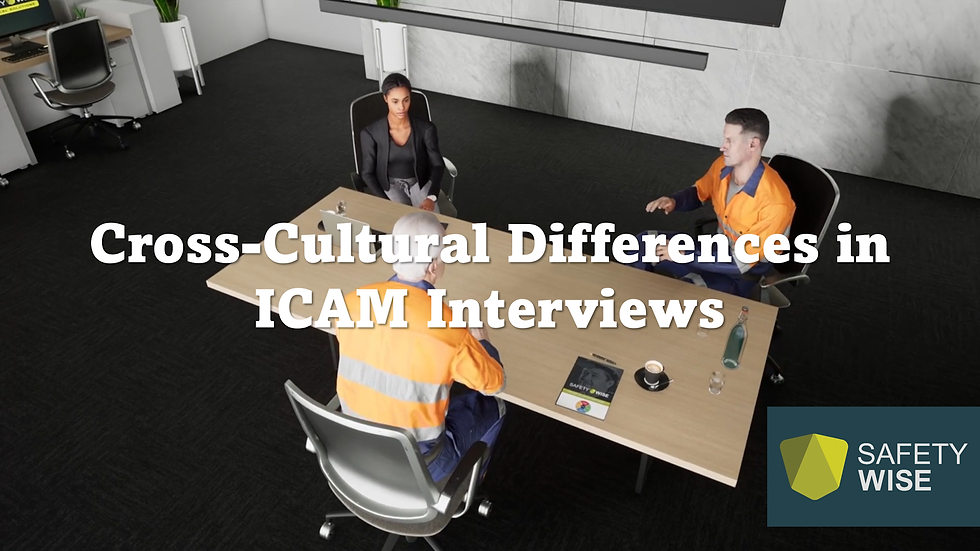5 Steps To Improved Scene Photography
- Luke Dam
- Dec 7, 2016
- 3 min read

Introduction
The photographing of incident scenes is an essential skill of a workplace incident investigator.
It provides a record of the scene for future reference and can visually demonstrate what has happened and how it happened. Photographs add great value when used in reports.
Here’s are 5 key steps to improve scene photography.
Equipment Required
Personal protective equipment
High resolution camera/mobile device
Battery backups or chargers depending on the device being used
Memory cards for digital cameras or sufficient storage on the device
Additional lighting (with improved technology, small hand-held LED torches can be a great and affordable resource)
Tripod or similar
Pen
Notebook
Rulers and tape measures
Adaptor/leads for downloading images from devices
1. Capture the whole scene
Ensure you capture the whole scene, including:
Overall

Mid-Range

Close Up

Each of these photos helps to paint a picture of what has happened.
It should also be noted that this incident occurred during the night so photos were taken immediately after, pending the investigation being undertaken in daylight.

2. Use multiple angles to capture everything required
By using different angles and positions, you can ensure that you’ve captured everything that is important to the investigation.
3. Avoid disturbing the scene
As you work through the investigation and photographing the incident scene, take before and after photos.
This is especially important when you need to move things to capture specific items such as positions of switches, controls and similar, equipment, broken or damaged equipment/parts and others.
4. Take notes about the photos taken
It’s inevitable that you may take multiple photos while investigating an incident.
You must be able to recollect what each of those photos were and why they were taken, which will diminish rapidly as you get more involved in the investigation and as time passes
5. Be respectful
Whilst there may be occasions that photos are taken of injuries, injured persons or deceased, you need to be respectful in terms of how these are used.
If the photo has no bearing on the investigation, does it need to be taken in the first place or stored post the investigation?
For example, if an operator sustains a crushed foot in an incident, do we need a photo of the crushed foot to know what it is? Does a photo of the actual injury have any bearing on the investigation?
Also remember that there may be times that incident investigation reports are shared with those who might find graphic photos m disturbing.
Conclusion
Take the time to plan out your investigation (A well prepared PEEPO chart can help here).
Ensure you capture all the photos required as you often only get access to the scene for a short period before operations need to be resumed.
Also consider if a scene can or cannot be recreated at a later date and what will be lost if this is done.
Why not download a copy of our free poster “5 Steps to improved scene photography”? Click the image below to register your details and download (opens in a new window)

Interested in Knowing More?
Further information on Safety Wise’s Incident Cause Analysis (ICAM) Training is available from our website: http://www.safetywise.com/
Additional ICAM Related Services
Safety Wise also offers the following additional services for sites that adopt the ICAM investigation analysis method:
Quality review of incident investigations using ICAM
Trend analysis of organisational factors contributing to serious incidents
Participation in investigations as an external / independent party

ABOUT THE AUTHOR- Luke Dam (Chief Operations Officer)
Luke has worked in various industries over the years including pharmaceutical, retail, manufacturing, and transport including iconic brands like WesFarmers, Goodyear, CSL Limited, and Incitec Pivot Limited.
His work in OHS and learning and development has seen him deliver services to clients, both internal and external as well as managing service delivery teams around the world.
Luke holds a Graduate Certificate of Management (Learning) as well as a Diploma of Occupational Health and Safety, a Diploma of Training and Assessment Systems, a Certificate IV Workplace Training and Assessment, a Certificate III in Mine Emergency Response & Rescue and a Certificate II in Public Safety (SES Rescue).
Luke is extensively involved in a project to establish an association dedicated to confined space safety and to drive change in legislation to promote best-practice in this high-risk area. Luke is passionate about online OHS and incident investigation communities, moderating a number of large LinkedIn groups boasting over 11,000 members globally.


















Comments